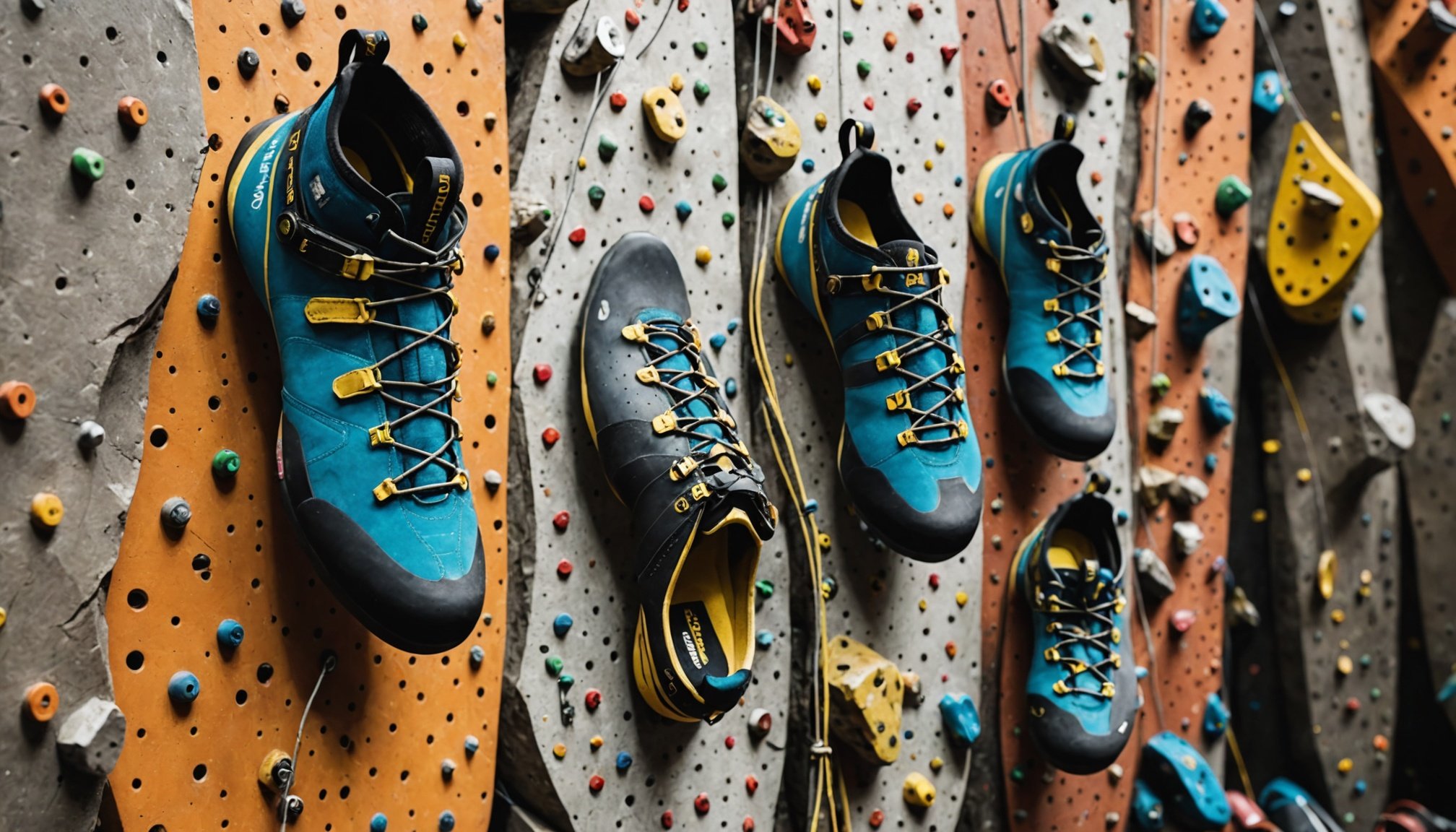Key Features to Consider When Choosing Climbing Shoes
When selecting climbing shoes, understanding the essential features is crucial for peak performance. The right climbing shoe fit directly influences your climbing efficiency. Shoes should be snug but not painfully tight, ensuring that your foot is fully supported without constriction.
The material of climbing shoes plays a vital role in both durability and comfort. Leather shoes tend to stretch more over time, adapting to the foot’s shape. In contrast, synthetic materials maintain their shape longer but may need breaking in to achieve a comfortable fit. Consider the material based on how often you plan to climb and in what conditions.
This might interest you : Mastering pre-race nerves: proven strategies for competitive runners to find calm before the race
Shoe stiffness determines the level of support and ability to perform complex maneuvers. Stiff shoes help in pushing against small footholds, enhancing performance enhancement by providing stability on challenging climbs. However, softer shoes offer more flexibility and sensitivity, which is better suited for smearing techniques on slab surfaces.
In summary, focus on features like fit, material, and stiffness. Balancing these aspects will ensure you choose a pair of climbing shoes that not only improve your climbing experience but also ensure comfort and longevity.
Topic to read : Hydration mastery for endurance horse riders: unleash peak performance and lasting stamina
Types of Climbing Shoes for Competitive Rock Climbing
Choosing the right climbing shoe types can significantly influence your climbing experience and success. Here is a breakdown of the three main types: aggressive shoes, moderate shoes, and neutral shoes.
Aggressive Shoes
Aggressive shoes feature a downward camber and a snug fit, designed to enhance performance on overhanging sport routes and challenging bouldering problems. Their shape allows for high levels of precision and power transfer to the toe, making them ideal for technical footwork but less comfortable for all-day uses. The toe and heel rand designs are crafted to stick on the smallest holds, providing the climber with an edge in competitive scenarios.
Moderate Shoes
With a more relaxed arch than aggressive options, moderate shoes balance performance and comfort, ideal for performance enhancement on multi-pitch climbs or trad climbing. The shoe’s moderate downturn supports footholds without compromising comfort during prolonged use. They are versatile, fitting various climbing styles and terrains, offering climbers a middle ground between aggressive and neutral shoes.
Neutral Shoes
Neutral shoes offer a relaxed fit with a flat profile, prioritising comfort and support. They are perfect for beginners and those who partake in casual or all-day climbing sessions. Their straightforward design encourages a natural foot position, promoting pain-free climbs while developing fundamental techniques.
Recommended Brands for Climbing Shoes
When exploring the world of climbing shoes, understanding which brands excel can guide you toward making the best choice for your climbing needs. Performance brands like La Sportiva, Scarpa, and Evolv are often praised in climbing shoe reviews for their innovation and quality materials. These brands are known for their attention to precision and durability, critical factors for advanced climbers facing demanding routes.
La Sportiva is celebrated for its aggressive shoe designs, such as the Solution model, highly regarded in the climbing community. Scarpa, on the other hand, offers excellent balance in their models, appealing to both boulderers and trad climbers with their reliable grip and comfort. Evolv shoes frequently receive commendations for their versatility, perfect for climbers seeking an adaptable shoe for various terrains.
User reviews frequently highlight the ergonomic designs these brands offer, which aid in performance enhancement by providing exceptional support and foot control. Testimonials from competitive climbers emphasize the importance of such features for success in high-pressure climbing situations. When you choose recognized climbing shoe brands, you not only invest in high-quality footwear but also enhance your potential for climbing achievement.
Tips for Trying on Climbing Shoes
Finding the perfect climbing shoe fit is essential for both comfort and performance. When trying on climbing shoes, it’s important to go through a few steps to ensure the best fit. Begin by measuring your foot size accurately, as even a small deviation can lead to discomfort. Remember, climbing shoes should be snug but not painfully tight, providing just enough room for your toes to slightly curl.
Consider shoe sizing differences between brands. You might find your size varies significantly from one maker to another, so trying them on before purchasing is crucial. When testing shoes, wear socks similar to those used during climbing sessions to mimic real conditions.
Avoid common mistakes like buying shoes during the wrong time of day; feet tend to swell, so ideal measuring times are later in the day. Also, don’t assume a shoe will stretch; synthetic materials often hold their shape. Walking or even standing in the shoes for a few minutes during the fitting process can help you identify pinch points or areas of discomfort. Ensuring these factors will maximise performance enhancement and keep climbing enjoyable.
Maintenance and Care for Climbing Shoes
Taking proper care of climbing shoes is vital for maintaining their performance enhancement capabilities and prolonging their lifespan. Regular cleaning and proper storage are two key practices that ensure your shoes stay in top condition.
When it comes to cleaning climbing shoes, hand wash them using warm water and mild soap. Avoid using a washing machine, as it can damage the shoe material and structure. Gently scrub the surface with a soft brush, paying special attention to removing dirt and chalk build-up. After cleaning, air dry them away from direct sunlight to prevent material deterioration.
Extending shoe life starts with correct storage. Always let your shoes air out after climbing to reduce odour and bacterial growth. Store them in a cool, dry place, avoiding damp environments that promote mould. Place them in a breathable bag rather than a sealed container to allow moisture evaporation.
Routine climbing shoe maintenance includes checking for signs of wear, such as thinning soles or loose seams. Address minor repairs promptly to avoid exacerbating damage. By incorporating these practices, you’ll keep your climbing shoes both functional and comfortable, ready for your next adventure.











